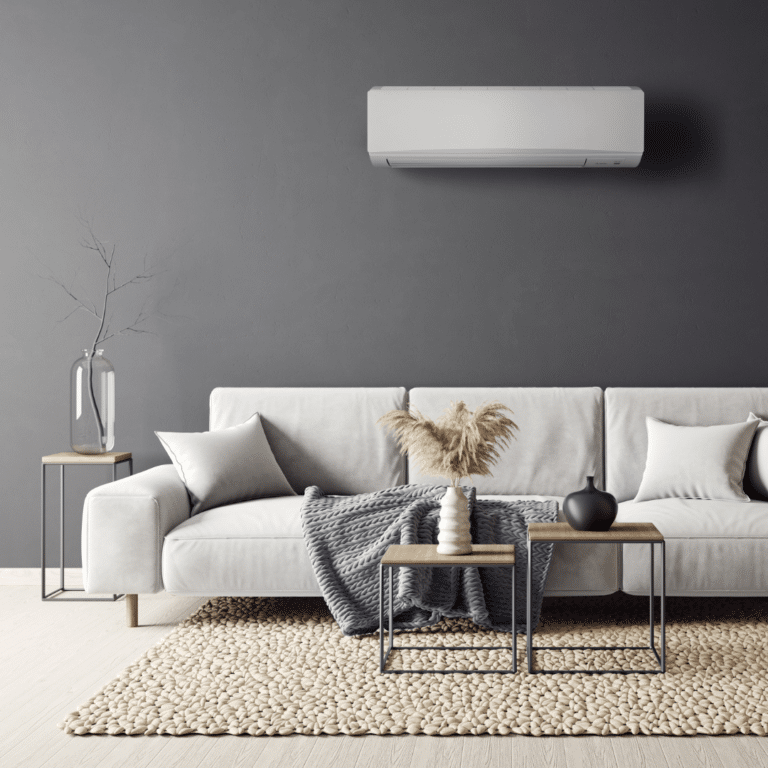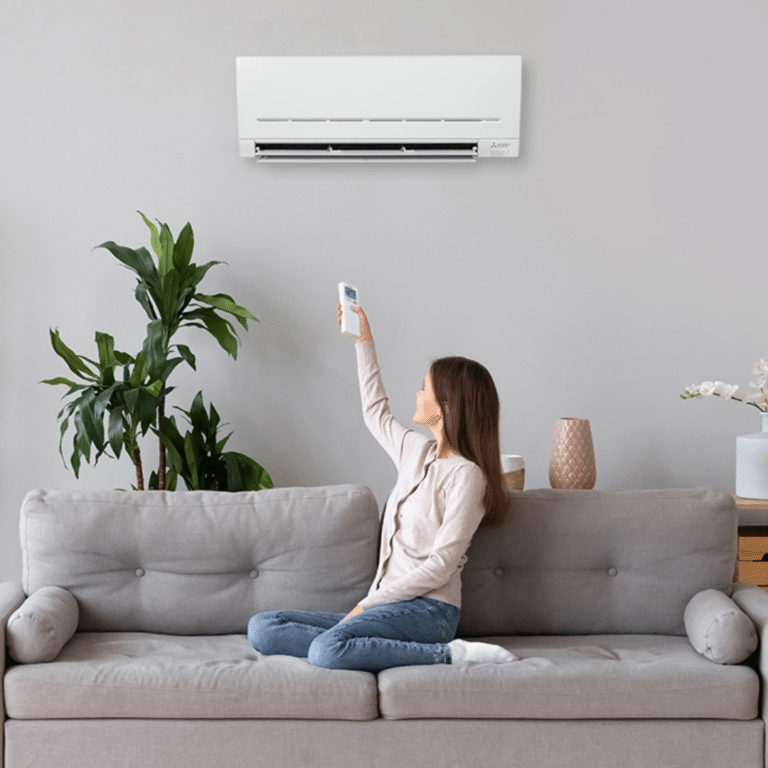During winter, your air conditioner may occasionally pause heating to complete a defrost cycle. While this is a normal function, many homeowners are unsure why it happens or what it means for their system.
Our team at Mitsubishi Electric explains the purpose of the defrost cycle and how it helps keep your air conditioner working efficiently in cold conditions.
What Is the Defrost Cycle?
During the colder months, reverse cycle air conditioners rely on outdoor air to generate warmth inside your home or workplace. However, when outdoor temperatures drop to around 5°C or below, moisture in the air can freeze on the outdoor heat exchanger, reducing the unit’s efficiency. To counteract this, the air conditioner enters a defrost cycle, an automatic function that melts accumulated ice and ensures the system continues operating effectively.
When the sensors in the outdoor unit detect ice formation, the system temporarily suspends heating mode and switches to defrost mode. During this process:
- The indoor and outdoor fans stop to prevent cold air from being blown inside.
- The Outdoor Unit switches to Cooling
- The compressor continues running to generate heat and melt the ice.
- The defrost cycle continues until the outdoor heat exchanger reaches a sufficient temperature and the ice is cleared.
Once the ice has melted, the unit automatically resumes normal heating operation.
Some users may notice a brief reduction in heating performance during this period and mistakenly think their air conditioner is malfunctioning. However, the defrost cycle is a normal and necessary function designed to maintain efficiency and prolong the lifespan of the system. This is not a fault with the product but an essential feature that allows air conditioners to continue providing effective heating in cold conditions.
What Are the Benefits of A Defrost Cycle?
The defrost cycle is essential for maintaining optimal heating performance and ensuring your air conditioner operates efficiently in cold conditions. Reverse cycle systems, including wall-mounted split systems, ducted air conditioning systems, and floor-mounted console units, rely on this automatic process to prevent ice build-up on the outdoor heat exchanger. Once the frost has melted, the unit returns to normal heating operation.
Without a defrost cycle, ice accumulation will reduce heating performance and lead to increased energy consumption, placing unnecessary strain on the system. While modern air conditioners are designed to handle cold weather conditions, prolonged ice build-up in extreme cases could potentially lead to component damage. However, the defrost cycle helps prevent this by ensuring the unit maintains reliable performance and longevity.
Below are some of the frequently asked questions about the defrost cycle, and more information can be found in our air conditioning defrost cycle guide.
Defrost Cycle FAQs
Why does my unit have to do a defrost cycle?
Any ice building up on the outside heat exchanger will reduce the airflow across the heat exchanger, which reduces the heating performance of your air conditioner. In extreme cases, this can also cause damage to the outdoor unit.
Does the defrost cycle affect the overall lifespan of my air conditioner?
The defrost cycle is a normal part of cold weather operation and plays a key role in maintaining optimal heating performance. By preventing frost and ice build-up on the outdoor heat exchanger, it reduces strain on key components, helping to extend the unit’s lifespan and ensure reliable operation over time.
How do I tell if my unit is in a defrost cycle?
When your air conditioner enters a defrost cycle, heating will temporarily pause. Inside, the indoor fan will stop, and depending on the model, there may be a visual indicator such as a “heat standby” or “defrost” message on your wall or remote controller. Outside, the outdoor fan will also stop, but the compressor will continue running to generate heat and melt any ice build-up on the outdoor heat exchanger.
How often will my unit go into defrost mode?
There are several factors that influence how often a unit will go into defrost mode. Some of these include, but aren’t limited to:
- The outdoor temperature and humidity
- The amount of heating required
- The condition and cleanliness of the system.
Is there any way I can help to reduce defrosting?
There are several ways to help minimise the frequency of defrost cycles:
- Keep your unit well maintained and ensure it is operated correctly.
- Avoid setting the thermostat too high. A lower temperature setting reduces the workload on the unit, meaning it will need to defrost less often in cold conditions.
- Improve insulation in your home. Installing insulation in ceilings, walls, and under floors helps retain heat, reducing the need for excessive heating and frequent defrost cycles. Insulation is also important for cooling during the warmer months.
- Close doors, curtains, and shutters to minimise heat loss and maintain a stable indoor temperature. Homes with security or bushfire shutters may experience improved heat retention, helping to reduce heating demands in colder conditions.
- Ensure the outdoor unit has proper airflow. Keep the area clear of obstructions such as privacy screens, panels, and garden structures. Trim any nearby foliage that could block airflow around the unit.
- Raise the outdoor unit at least 100 mm off the ground to prevent it from sitting in a pool of cold, moist air, which can contribute to ice build-up.
- Locate Outdoor Unit in a well-ventilated location: having the Outdoor Unit in a location where there is little ventilation lowers the temperature around the unit, thus increasing defrost.
- Make sure the system selected is correctly sized: systems that are undersized run longer and increase Defrost cycles.
Following these steps can help improve heating performance and reduce the frequency of defrost cycles. If frequent defrosting continues to be an issue, consulting a certified professional for further assessment is recommended.
What do I do if my air conditioning defrost cycle doesn’t activate?
In the event that your reverse cycle air conditioning system fails to initiate the defrost cycle, it is recommended that you address the problem at your earliest convenience. This is to prevent damage or further inefficiencies in future. First, check for any common impediments such as blocked air filters, reduced airflow, or incorrect thermostat settings. If these simple troubleshooting steps fail, it is always recommended that you seek the help of a professional. Certified technicians are trained to inspect for specific malfunctions within components in the system and can assist in rectifying the issue.
It is incredibly important that you do not attempt any makeshift ice removal methods—pouring hot water or chipping at the ice can ultimately damage the system. For safe and effective operation, always follow the recommended practices of your unit’s manual and rely on professional services.
If your technician suggests a replacement of parts or a full upgrade of your unit, you may wish to browse the available options for a new system.



